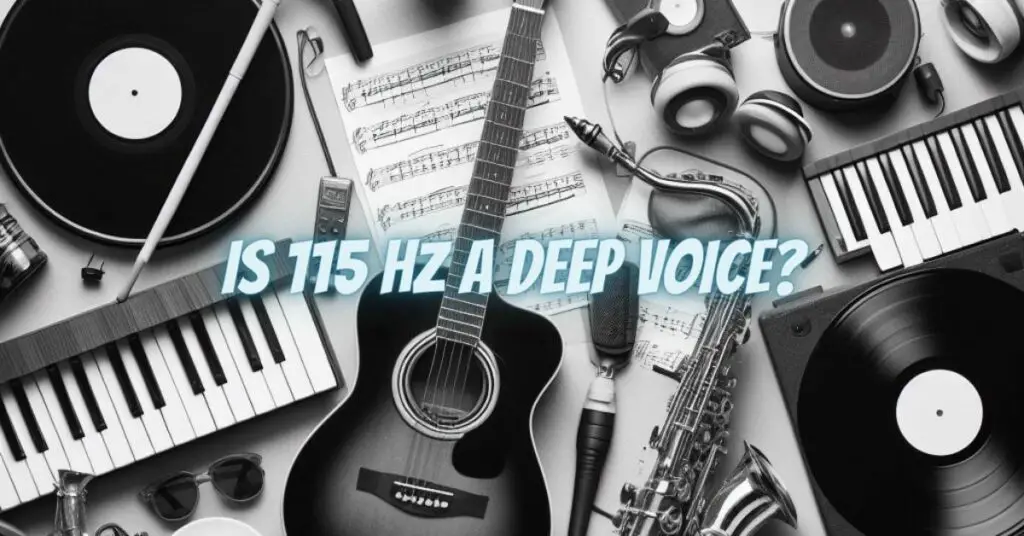In the symphony of vocal tones, the frequency of 115 Hz emerges as a critical juncture that often contributes to the perception of depth in a voice. This article delves into the acoustics of sound, the physiology of the human voice, and the significance of 115 Hz to unravel whether it can be considered a marker for a deep voice. By examining the interplay between frequency, resonance, and perception, we gain insights into the complexities of defining vocal depth in the context of this specific frequency.
- Frequency and Pitch: Sound, characterized by its frequency, plays a fundamental role in the perception of pitch. The frequency of 115 Hz places it within the lower end of the audible spectrum, generally associated with lower pitch ranges. As we explore the impact of this frequency on vocal tones, we delve into the realm where depth in the voice often finds resonance.
- Physiological Factors in Vocal Depth: The depth of a voice is intricately linked to the physiological characteristics of the vocal mechanism. Vocal depth is often associated with longer and thicker vocal folds, resulting in a lower fundamental frequency. The resonance chambers in the throat and chest also contribute to the perception of depth, with frequencies around 115 Hz finding resonance in these spaces.
- 115 Hz as a Resonance Point: Frequencies around 115 Hz are situated in a range that aligns with resonant frequencies in the human body. The chest cavity, in particular, tends to resonate with frequencies in this range, adding a richness and fullness to the vocal tone. This resonance can be especially pronounced in male voices, contributing to the characteristic depth often associated with lower frequencies.
- Harmonic Content and Overtones: Vocal tones are not solely defined by the fundamental frequency. Harmonics, which are multiples of the fundamental frequency, and overtones play a crucial role in shaping the overall timbre of a voice. A deep voice is characterized not only by a lower fundamental frequency around 115 Hz but also by a robust harmonic structure that adds complexity and character to the tone.
- Perceptual Considerations: The perception of vocal depth is subjective and influenced by cultural, contextual, and individual factors. While 115 Hz may align with the lower register and contribute to a sense of depth, other elements such as vocal technique, expression, and articulation also play pivotal roles in shaping how listeners perceive the depth of a voice.
- Technological Implications: In the realm of audio production, the manipulation of frequencies is a common practice. Equalization (EQ) tools allow engineers to emphasize or attenuate specific frequency ranges, including the region around 115 Hz. This enables creative control over the perceived depth of a voice, allowing for adjustments that align with the artistic vision of a particular project.
In the exploration of vocal depth, the frequency of 115 Hz emerges as a notable contributor to the resonant and full-bodied qualities often associated with deep voices. While this frequency can serve as a marker for depth, it is essential to recognize the multifaceted nature of vocal perception. The interplay between physiological factors, harmonic content, and the artistic choices made in audio production collectively shape our understanding of what constitutes a deep voice. In the intricate symphony of sound, 115 Hz stands as a resonant frequency, contributing to the sonic richness that defines the captivating depth of the human voice.


